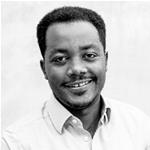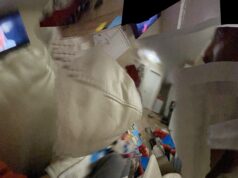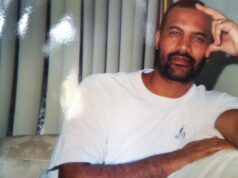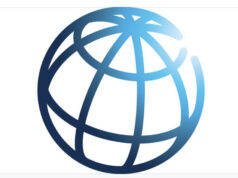On January 3, the Ethiopian Prime Minister Hailemariam Desalegn made two major announcements: his government will release political prisoners and close down a notorious detention centre at the heart of Ethiopia’s capital,widely known as a torture chamber for dissidents and government opponents. Desalegn announced the decision as part of a wider package of reforms aimed at fostering national reconciliation and widening the democratic space.
Rights groups welcomed the announcement as “an important step toward ending long-standing political repression and human rights abuse in the country” while others saw the move as a significant concession to the relentless protests of the last two years by the Oromos and Amharas – the two largest ethnic groups in the country.
As local and international media began to scrutinise the rationale, implications and consequences of the announcement, most of the commentary focused on Ethiopia’s perceived admission that there are political prisoners in the country. US House Foreign Affairs Committee Chairman Ed Royce even issued a statement praising Ethiopia for “finally acknowledg[ing] that it holds political prisoners.”
Shortly after the announcement, however, the government distanced itself from this interpretation by emphasising the fact that the prime minister never used the term “political prisoners” in his initial statement.
Indeed, Desalegn only referred to “political leaders and individuals whose crimes have resulted in court convictions or have resulted in their ongoing prosecution under the country’s law,” in his statement and never gave a clear indication as to which prisoners will be eligible for release.
Ethiopia’s political prisoners
The Ethiopian government has always denied consistent and widespread reports by human rights groups that it holds political prisoners. Like his predecessor, the late Meles Zenawi, who adamantly denied politicising the legal system to stifle dissent and opposition, Desalegn has also repeatedly dismissed the suggestion that Ethiopia is holding political prisoners.
Shortly after he took power in 2012, Al Jazeera’s Jane Dutton asked Desalegn if he intends to “confront” the legacy of political repression he inherited from Zenawi and take steps to release the “thousands of [political opposition] languishing in jail”. Desalegn said, “There are no political opposition that are languishing in prison.”
In May 2015, shortly before the country’s national election in which the ruling party won 100 percent of seats both at the national and regional levels, Al Jazeera’s Martine Dennis asked Desalegn about the imprisonment of “record number of journalists” to which he replied “these are not journalists …The moment you join a terrorist group, you become a blogger”.
There can be no justification to hold some political prisoners or journalists, bloggers and scholars while releasing high-profile leaders of political parties.
No sitting government would publicly admit to holding political prisoners, and – even after last week’s announcement – Ethiopian government still appears to be refusing to do so. But evidence suggests that very few governments in the world today hold more political prisoners than Ethiopia.
Since assuming power, the government frequently used the legal system to lock up members and leaders of the opposition. Indeed, the courts served as potent instruments of repression and power consolidation second only to the military-security apparatus.
Since the early days of the regime and particularly following the adoption of the country’s notorious anti-terrorism law in 2009, there has been a frightening politicisation of the legal system and the administration of justice. With or without disguise, Ethiopia used its courts and other institutions of justice to harass, intimidate, and eliminate political opposition from the political space.
In the early days of the regime, several members of opposition parties have been held in detention centres throughout the country without charges, particularly in the Oromia regional state. Actual or suspected members of the Oromo Liberation Front have been arrested in mass and detained without charges. More than two decades later, the whereabouts of several individuals including prominent Oromo politicians such as Nadhi Gamada and Bekele Dawano are still unknown.
Following the contested election in 2005, the government rounded up leaders of the Coalition for Unity and Democracy (CUD) who made significant electoral gains that denied the incumbent its majority. Since the government adopted its notorious anti-terror legislation, more than 1,000 people including opposition political leaders, journalists, bloggers, activists, scholars, and religious figures, have been charged with terror-related crimes. It is estimated that tens of thousands of individuals are currently in jail because of the government’s intolerance to dissenting views.
What makes these individuals political prisoners is not their innocence or guilt but the fact that their arrest, prosecution, and conviction were purely motivated by political ambitions as opposed to normative concerns with the rule of law and justice. In other words, the legal process is set in motion not for the determination of guilt and innocence but for political expedience, to pursue the dual goal of delegitimising political foes and physically eliminating them from the political space.
While the Ethiopian government still appears to be refusing the mere existence of thousands of political prisoners in the country, last week’s announcement, however incomplete, is a step in the right direction.
The closure of the infamous torture chamber commonly known as Maikalawi is another welcome development that signals a departure from the repressive practices of the past. But it needs to be noted that the prime minister did not admit that his government used the prison as a torture centre. He instead noted that the prison will be closed and turned in to a museum as result of its role in past atrocities.
Yet there are many credible reports (pdf) showing that opposition politicians, protest organisers, journalists, suspected dissenters and other voices critical of the government are taken to Maikalawi and subjected to torture or other forms of inhuman and degrading treatment under the rule of the current regime.
The real reasons behind the announcement
The decision to release political prisoners and close down the detention centre is a compromise between the four political parties that make up the ruling Ethiopian People’s Revolutionary Democratic Front (EPRDF) coalition. But understanding the political considerations behind the announcement requires a proper understanding and appreciation of the two central issues: the constitutive and operational logic of the EPRDF and the nature of the crisis destabilising the country for well over two years.
EPRDF is the brainchild of the Tigrayan People’s Liberation Front (TPLF), a Marxist-Leninist movement that fought to liberate the Tigray ethnic group, which comprise six percent of Ethiopia’s more than 100 million people. In the final days of Ethiopia’s civil war, the TPLF orchestrated the creation of three satellite parties – Oromo People’s Democratic Organization (OPDO), the Amhara National Democratic Movement (ANDM), and the Southern Ethiopian People’s Democratic Movement (SEPDM) – that ostensibly represent their respective ethnic groups.
The TPLF assembled these puppet organisations to consolidate its grip on power. They helped broaden TPLF’s appeal beyond Tigray and bolster its political legitimacy while also enabling it to smother real opposition from autonomous parties such as the Oromo Liberation Front (OLF) and the All Amhara Peoples Organization (AAPO).
For 26 years, TPLF used this vassal configuration to dominate all aspects of the country’s political life, while mercilessly muzzling dissenting voices both from within and outside the party. The discontent and suffering that have been simmering underground for decades exploded into the open in November of 2015 when Oromos, the largest ethnic group in the country, took to the streets in protest.
In July of 2016, the Amharas, the second-largest ethnic group in the country, joined the protest, creating a nationwide protest movement that reconfigured the political landscape and brought the government to its knees.

Demonstrators chant slogans while flashing the Oromo protest gesture during Irreecha, the thanksgiving festival of the Oromo people, in Bishoftu town, Oromia region, Ethiopia [Tiksa Negeri/Reuters]
The protests not only exposed the structural anomalies at the heart of Ethiopia’s political system, but also brought about a significant reconfiguration of the asymmetric relationship between the four parties that make up the EPRDF. TPLF lost its absolute power within the coalition as its junior partners began to reinvent themselves and side with their respective people.
This is particularly evident in Oromia, where the new leadership of the region refused to play second fiddle. OPDO began to flex its muscles, knowing full well that as the party with the most seats in parliament, and the largest population, it can cripple the government. In a major break, the new leaders of OPDO began protesting the disproportionate and indiscriminate policing, harassment, imprisonment, and torture of Oromos by security forces.
In a joint press statement of the four parties that make up the ruling coalition, Lemma Megersa, the leader of OPDO and the president of Oromia regional state, characterised Maikalawi as “a site in which our citizens have been castrated for years“. Megersa, a transformational figure with a distinct ability to appeal to people across competing nationalist narratives and fault lines that divide Ethiopian politics, went on to argue that “while it is one thing to close it down, it is important that we look at the justice sector more broadly, from investigation to prosecution, trial, and sentencing.”
While the proposed package of reforms are in the interests of the OPDO and ANDM, it is not clear to what extent the other parties, particularly the TPLF, which still controls the intelligence, the military and the federal police, is genuinely committed to enforcing measures, which, if fully implemented, would ultimately reduce its influence within the coalition, the government and the state more generally.
TPLF’s hegemonic status depends on fostering hostility and division, not national reconciliation and democratisation. Indeed, just three days after the announcement, the Federal Police announced a “deep investigation” into “Qeerroo Oromo” (Oromo youth) movement, a decision which collides head-on with the party’s stated goals of national reconciliation and democratisation.
The government acknowledges the unprecedented nature of the crisis facing the country and rightly identifies national reconciliation and widening the democratic space as two of the most significant policy objectives necessary to save the country from plunging into the abyss. However, the government cannot pursue these goals while at the same time proposing measures in conflict with these imperatives.
The government must come to terms with the transformations of the last two years and open up the political process for all voices that seek a hearing and bodies that seek visibility. This means adopting the broadest possible definition of political prisoners and releasing all those whose arrest, detention, prosecution, and conviction have been driven by political considerations.
There can be no justification to hold some political prisoners or journalists, bloggers and scholars while releasing high-profile leaders of political parties. If there is any lesson the government can learn from the protests of the last two years, it is that more repression will only escalate the crisis, not contain or avert it.
The views expressed in this article are the author’s own and do not necessarily reflect Al Jazeera’s editorial policy.

























